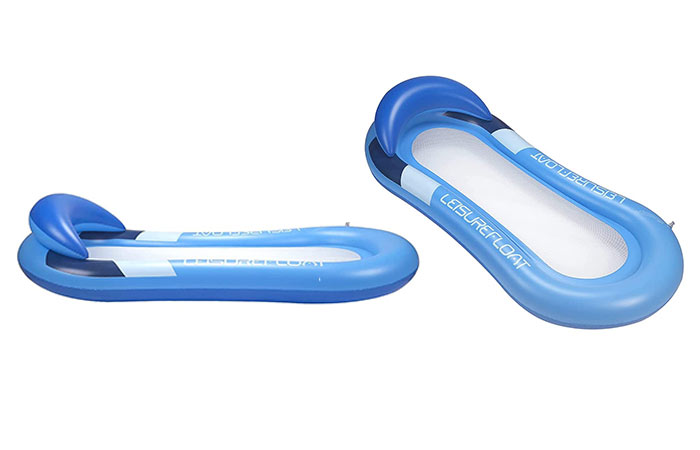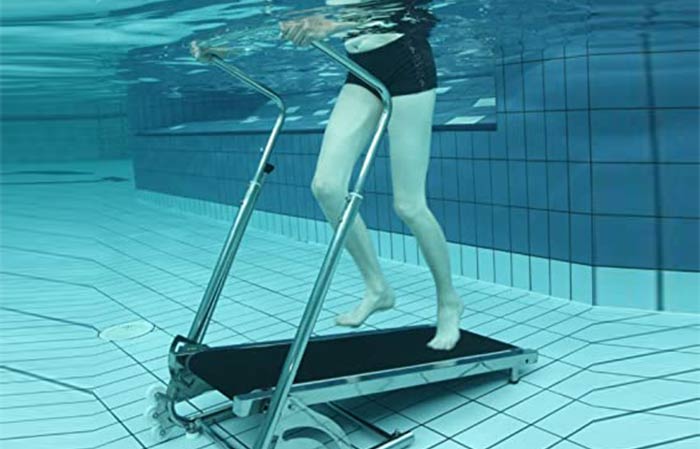A Comprehensive Guide to Aqua Cycling: Dive into the World of Water-Based Fitness
Offering a refreshing and low-impact alternative to traditional cycling, aqua cycling has gained popularity as an exciting and effective fitness fad that combines cycling with the resistance and buoyancy of water to provide an added challenge that helps build muscle and improve cardio.
In this guide, we will explore aqua cycling in detail, including its benefits, drawbacks, techniques, equipment, and safety considerations. We’ll also have answers to frequently asked questions, to ensure you have all the information you need to make the most of this exhilarating water-based activity.
What is Aquatic Cycling?
Aqua cycling, also known as water cycling, aqua spinning or hydro spinning, is a fitness activity that involves riding on a stationary bike submerged in water and secured to the pool floor for stability.
The bikes used in aqua spinning are similar in design to traditional indoor cycling bikes like those found in the gym. They feature pedals, handlebars, and adjustable resistance level knobs. However, they are specifically engineered for water use, with corrosion-resistant materials and sealed components.

In addition to the aqua bike, other equipment required for aqua cycling include;
- Swimwear
- Water shoes
- Swim Towel
- Water bottle to stay hydrated
This hydro spinning uses the water’s resistance effect on your muscles to effectively build strength and endurance. The water’s resistance adds an extra challenge to the workout, engaging more muscle groups and increasing the calorie burn
Aqua biking is done as classes that are often led by certified instructors who guide participants through a series of different cycling techniques and workouts.
The instructor may include different training methods, such as interval training or endurance-focused sessions, to create a varied and engaging experience on different muscles throughout your body.
The classes are commonly accompanied by upbeat music, synchronized movements with other members, and even choreography to enhance the overall atmosphere and energy of the workout.
What are the Benefits of Aqua Cycling?
Here are some of the key advantages of engaging in aqua biking:
Offers a low-impact exercise
Aqua spinning is gentle on the joints and muscles due to the water’s buoyancy. The water’s supportive properties help to reduce the impact on the body, making it an ideal exercise option for individuals with joint issues, or injuries, or those seeking a low-impact workout.
It allows you to work your muscles and cardiovascular system without placing excessive stress on vulnerable areas that might cause injury.
Enhances your cardiovascular fitness
Aqua biking is an effective way to improve your cardiovascular health. Pedaling against the water’s resistance increases the heart rate and promotes aerobic reaction in the body.
This helps to strengthen the heart, improve lung capacity, and enhance overall endurance. Regular Underwater spinning sessions can contribute to a healthier cardiovascular system and increased stamina.
Enhances muscle strengthening and toning
Aqua spinning engages a variety of muscle groups, providing a comprehensive workout throughout your body. The resistance provided by the water challenges the lower body muscles. By pedaling against the water’s resistance, these muscles are effectively strengthened and toned.
Additionally, the core muscles, including the abdominals and back muscles, are engaged to maintain balance and stability. Aqua biking helps to improve muscle definition, strength, and overall tone.
Helps in weight loss and calorie burning
Aqua biking is an effective exercise for weight loss and calorie burning. The combination of cardiovascular activity and muscle engagement results in higher calorie expenditure.
The water’s resistance increases the effort required to pedal, leading to an enhanced calorie-burning effect. Regular participation in underwater spinning, along with a balanced diet, can contribute to weight management and body composition goals.
Improves joint mobility and flexibility
The buoyancy of water reduces the impact on joints, allowing for an increased range of motion and improved joint mobility.
Aqua spinning promotes fluid movement in the joints, which can be beneficial for individuals with various joint conditions. The resistance and support provided by the water also contribute to improved flexibility over time.
Helps during rehabilitation and injury recovery
Aqua cycling is often recommended as a part of rehabilitation programs and injury recovery. The low-impact nature of the activity allows individuals to exercise without aggravating existing injuries or conditions.
The water’s buoyancy also helps to support the body and reduce stress on healing tissues. Underwater spinning can aid in the recovery process by increasing blood circulation, promoting muscle strength, and maintaining cardiovascular fitness.
Helps better your mental well-being and relaxation.
Exercising in water has a calming effect on the mind and body. The soothing properties of water can reduce stress, promote relaxation, and enhance mental well-being. water cycling offers a refreshing and enjoyable workout experience, eventually contributing to a positive mood and overall mental health.
Cons of Aqua Cycling
While aqua spinning offers numerous benefits, it also has some drawbacks associated with the activity. Here are a few:
- Limited availability: Underwater spinning classes may not be as widely available as traditional indoor cycling classes at the gym. Finding a facility with aqua spinning equipment and qualified instructors might be challenging, depending on your location.
- Equipment requirements: Aqua biking requires specialized equipment, including submerged stationary bikes and a pool. This means you need access to a facility that has this equipment, which may not be readily accessible to everyone.
- Cost: Participating in aquatic cycling classes may be more expensive compared to other fitness options. The specialized equipment, maintenance costs, and limited availability can increase fees. This could potentially be a deterrent for individuals on a tight budget.
- Environmental considerations: Underwater spinning relies on water resources, which raises environmental concerns. Pools and tanks require maintenance, water treatment, and energy for heating and filtration.
- Limited intensity control: Unlike land-based cycling, where you can adjust resistance levels more precisely, aqua spinning relies on the natural resistance of water. While some bikes offer adjustable resistance settings, it may not provide the same level of control as traditional indoor cycling bikes. This can limit the ability to fine-tune your workout intensity to match specific fitness goals.
- Availability of instructors: Aqua biking classes should ideally be led by qualified instructors who can guide participants through proper technique and form. However, finding certified water cycling instructors might be more challenging compared to other fitness exercises, limiting the availability of quality instruction.
How Aqua Cycling Works + Technique Tips
During an aquatic cycling session, participants enter the water and position themselves on specially designed stationary bikes. These bikes are engineered to be submerged in water and have adjustable resistance to accommodate different fitness and workout intensities.
Once on the bikes, participants begin pedaling and cycling just as they would on regular land bicycles. The bikes are secured to the pool’s floor to provide stability and prevent movement while pedaling.
The water depth may vary, with some classes focusing on shallower pools where participants can touch the pool floor, while others may decide to cycle in deeper waters where their feet do not touch the ground.
While pedaling, you push against the water’s resistance, and your leg muscles are actively involved, including the quadriceps, hamstrings, and calves. You can adjust the resistance by increasing or decreasing the pedaling speed or also by using equipment like water paddles.
During the process, the buoyancy of the water reduces the impact on your joints and muscles, eventually resulting in a low-impact workout. This means that the stress and strain on your joints are minimized while your muscles move.
Additionally, the water’s buoyancy provides support to your body, hence making you feel lighter. This reduces the impact of gravity and reduces the strain on your muscles compared to land bicycles. The support of water allows you to move more freely and comfortably while still engaging your muscles.
Apart from all that the core muscles also play an essential role during aquatic cycling. They help maintain balance and stability as you pedal in the water. Your abdominal muscles and the muscles in your back work to stabilize your body on the bike and generate power during each pedal stroke.
The continuous resistance and simultaneous engagement of multiple muscle groups in aqua spinning make it an effective full-body workout. It promotes muscle endurance, strength, and toning. Regular participation in Aqua biking sessions can lead to improved muscle definition and overall fitness of your body.

It is important to note that specific muscles in your body may have varied reactions depending on the intensity and duration of the aqua spinning session and your own fitness levels and technique. But just like any exercise, consistency, and proper form are key to achieving the desired muscle benefits and avoiding strain or injury.
Aqua Cycling Technique Tips
- Maintain a proper posture – When cycling engaging maintain a neutral spine while ensuring your core is fully engaged. This ensures stability and efficiency during the workout.
- Pedal in a controlled and rhythmic manner, using a full range of motion. Focus on both the downstroke and upstroke to engage different muscle groups. Emphasize pushing and pulling through the pedals.
- Vary resistance levels– Increase the resistance to challenge yourself and intensify the workout and lower it whenever you want. Always start with a comfortable level and gradually progress as your fitness improves.
- Incorporate high-intensity intervals by alternating between fast pedaling and slower recovery periods. This technique maximizes calorie burn and cardiovascular benefits. For example, pedal at a high intensity for 30 seconds, followed by 60 seconds of recovery pedaling. Repeat this cycle for the desired duration.
- Engaging your upper body– Make use of the bike handles or include hand paddles that allow for upper body engagement. Include movements such as pushing or pulling the handles or incorporating arm exercises to further engage the upper body muscles.
- Opt for comfortable and supportive swimwear that allows for freedom of movement. Choose a swimsuit that provides a secure fit and allows for ease of pedaling.
- Consider wearing water shoes to provide stability and prevent slipping on the pool floor. They also offer additional protection for your feet during the workout.
It is important to note that specific muscles in your body may have varied reactions depending on the intensity and duration of the aqua spinning session and your own fitness levels and technique. But just like any exercise, consistency and proper form are key to achieving the desired muscle benefits and avoiding strain or injury.
Safety Considerations
- If you have any health concerns or pre-existing medical conditions, it’s a good idea to consult with a healthcare professional before starting any new exercise program, including aqua cycling.
- Listen to your body and don’t push yourself beyond your capabilities. Start slowly and gradually increase the intensity and duration of your aqua cycling sessions.
- Drink plenty of water before, during, and after your workout to prevent dehydration. The water environment may make you less aware of your body’s sweating, so it’s crucial to stay mindful of hydration needs.
- Familiarize yourself with the pool’s rules and safety guidelines. Ensure the water depth is suitable for aqua cycling, and be cautious of any potential hazards in the pool area.
FAQs
Can aqua cycling help with weight loss?
Yes, aqua cycling can be an effective workout for weight loss because combines cardiovascular exercise with resistance training to not only burn calories but also tone your muscles.
By including regular hydro spinning sessions into your fitness routine, along with a balanced diet, you can create a calorie deficit and work towards your weight loss goals.
Note that consistency and intensity are key factors in achieving weight loss through any exercise program
How many calories can I burn during an aqua cycling session?
Normally, you can expect to burn around 300-500 calories every hour of an aqua spinning session.
However, it’s important to remember that these figures are approximate and individual results may vary depending on factors such as your weight, intensity of the workout, and duration of the session. It is the water’s resistance and the engagement of multiple muscle groups that contribute to the calorie-burning effect.
Is aqua cycling suitable for all fitness levels?
Yes, aqua cycling is suitable for individuals of various fitness levels. It provides a low-impact workout option, making it accessible for those with joint pain, injuries, or those who prefer a gentler exercise routine.
You can easily increase the intensity of the workout by modifying the resistance on the aqua bike. This allows you to start at a comfortable level and gradually increase the intensity as your fitness improves.
Do I need to know how to swim to participate in aqua cycling?
No, you don’t need to know how to swim to participate in hydro spinning since this workout typically takes place in shallow water, where you can comfortably sit on the aqua bike with your feet touching the pool floor.
However, it’s important to check with the specific aqua cycling facility or instructor to ensure that non-swimmers are accommodated and appropriate safety measures
In a nutshell, aqua cycling offers a refreshing and engaging fitness experience that combines the benefits of cycling with the resistance of water.
Whether you’re seeking to improve cardiovascular fitness, tone muscles, or enjoy a low-impact workout, water spinning has something to offer.
By adhering to the proper techniques, using the right equipment, and prioritizing safety considerations, you can maximize the benefits of this unique exercise modality.
So, why not dive in and experience the joy of aqua cycling for yourself?
Further Reading




